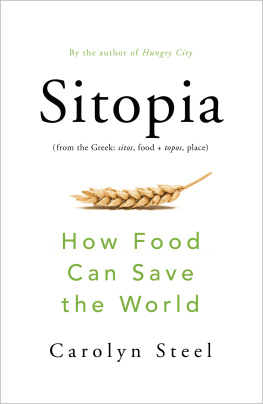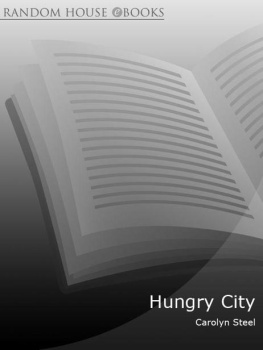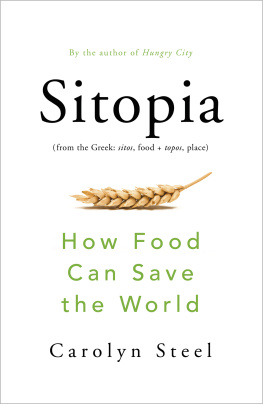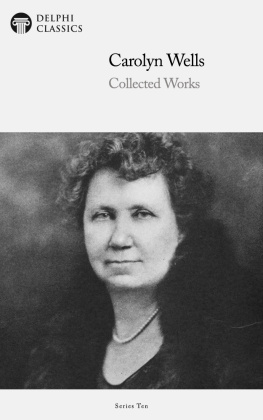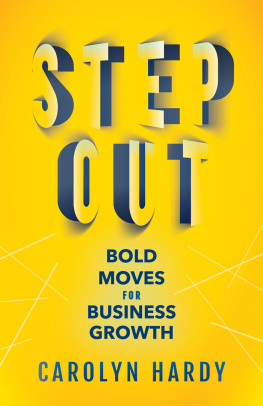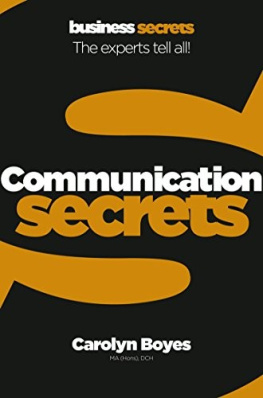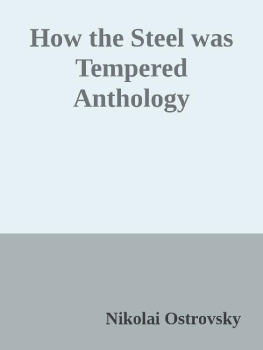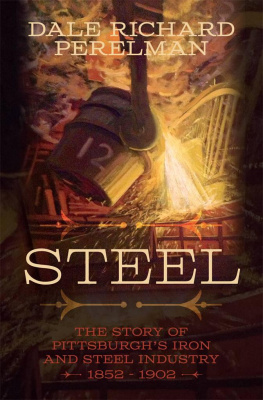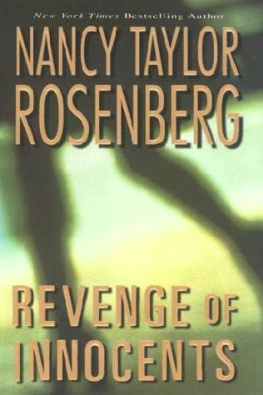CAROLYN STEEL - SITOPIA
Here you can read online CAROLYN STEEL - SITOPIA full text of the book (entire story) in english for free. Download pdf and epub, get meaning, cover and reviews about this ebook. publisher: RANDN - RANDOM HOUSE, genre: Children. Description of the work, (preface) as well as reviews are available. Best literature library LitArk.com created for fans of good reading and offers a wide selection of genres:
Romance novel
Science fiction
Adventure
Detective
Science
History
Home and family
Prose
Art
Politics
Computer
Non-fiction
Religion
Business
Children
Humor
Choose a favorite category and find really read worthwhile books. Enjoy immersion in the world of imagination, feel the emotions of the characters or learn something new for yourself, make an fascinating discovery.
- Book:SITOPIA
- Author:
- Publisher:RANDN - RANDOM HOUSE
- Genre:
- Rating:3 / 5
- Favourites:Add to favourites
- Your mark:
- 60
- 1
- 2
- 3
- 4
- 5
SITOPIA: summary, description and annotation
We offer to read an annotation, description, summary or preface (depends on what the author of the book "SITOPIA" wrote himself). If you haven't found the necessary information about the book — write in the comments, we will try to find it.
SITOPIA — read online for free the complete book (whole text) full work
Below is the text of the book, divided by pages. System saving the place of the last page read, allows you to conveniently read the book "SITOPIA" online for free, without having to search again every time where you left off. Put a bookmark, and you can go to the page where you finished reading at any time.
Font size:
Interval:
Bookmark:



Carolyn Steel is a leading thinker on food and cities. Her first book, Hungry City, received international acclaim, establishing her as an influential voice in a wide variety of fields across academia, industry and the arts. It won the Royal Society of Literature Jerwood Award for Non-Fiction and was chosen as a BBC Food Programme book of the year. A London-based architect, academic and writer, Carolyn has lectured at the University of Cambridge, London Metropolitan University, Wageningen University and the London School of Economics and is in international demand as a speaker. Her 2009 TED talk has received more than one million views.
BY THE SAME AUTHOR
Hungry City
In loving memory of my mother and father, who always fed me well
. Albrecht Drer, Adam and Eve (1504), The Met, New York (public domain)
. Pieter Bruegel the Elder, The Land of Cockaigne (1567), Alte Pinakothek, Munich ( M455JG; Art Library, Mr John Harper / Alamy Stock Photo)
. Anonymous, Family eating their midday meal at home (1946) ( Walter Sanders / The LIFE Picture Collection via Getty Images)
. Anonymous, Les Halles, Paris (c. 1900) ( Culture Club / Getty Images)
. Trs Riches Heures du Duc de Berry (14111416), Muse Cond, Chantilly ( MMGYAD; The Picture Art Collection, Paul Fearn / Alamy Stock Photo)
. Excavated Apple Tree with Roots (1970s), East Malling Research Station, Kent (courtesy of NIAB EMR)
. Juan Snchez Cotn, Still Life with Game, Vegetables and Fruit (1602), Prado, Madrid ( Photographic Archive Museo Nacional del Prado)
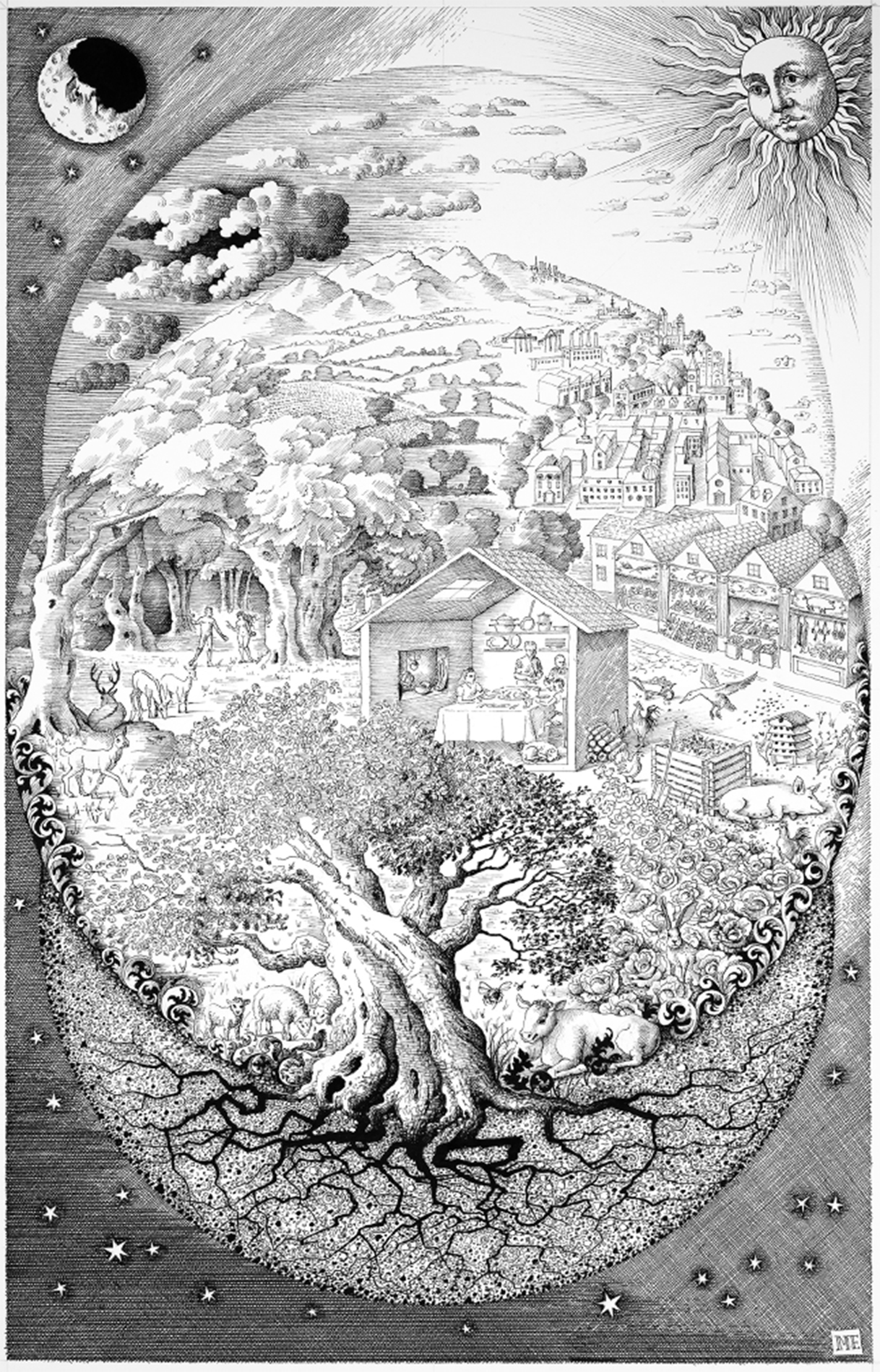
Several years ago, I attended a TEDGlobal conference in Edinburgh. On the last day, after nearly a week spent listening to dozens of thinkers, inventors, artists and activists all talking about their inspiring lives and work, I was slumped exhausted on a beanbag when a tall Dutchman approached me and introduced himself as a senior director of Shell. Im looking for answers, he said. Ive been here all week listening to people and have heard nothing important. We have vast problems to solve here! Have you got any good ideas? If you can give me one, I have millions to invest!
After several days absorbing what had felt to me like a non-stop stream of good ideas, I was somewhat taken aback. Nevertheless, I reflected on what the man from Shell had said and eventually told him that what I thought we most lacked in the world was philosophy. Weve forgotten how to ask the big questions, I said, such as what makes a good life. Ill never forget the look on his face. It went from incomprehension and incredulity to impatience and, finally, anger. We dont have time for that! he almost spat at me. We are seven billion people, living beyond our means, destroying the planet, and you say that what we need is philosophy?
Although not the immediate inspiration for this book, this exchange did help to galvanise my reasons for writing it. As the highly stressed Dutchman pointed out, we twenty-first-century humans find ourselves facing multiple life-threatening challenges; ones that require big thinking, urgent action and global cooperation if we are to sort them out. On that, the oilman and I were heartily agreed; where we differed was in our approach to tackling the crisis. Whereas he sought technical solutions to our various problems, I wanted to address their underlying causes by examining the factors, assumptions and choices that had created them. While technology and philosophy are hardly mutually exclusive disciplines clearly we need both what our grumpy exchange on the beanbags demonstrated was the gulf that can exist between the two. It is this divide that I seek to bridge in this book through the medium of food.
Why food? Because it is by far the most powerful medium available to us for thinking and acting together to change the world for the better. Food has shaped our bodies, habits, societies and environments since long before our ancestors were human. Its effects are so widespread and profound that most of us cant even see them, yet it is as familiar to us as our own face. Food is the great connector, the stuff of life and its readiest metaphor. It is this capacity to span worlds and ideas that gives food its unparalleled power. It is, you might say, the most potent tool for transforming our lives that we never knew we had.
In my first book Hungry City, I explored how the feeding of cities has shaped civilisations over time. The book followed foods journey from land and sea via road and rail to market, kitchen, table and waste dump, showing how each stage of the journey had shaped peoples lives around the world. By the end of writing the book, I had come to realise quite how profoundly food shapes virtually every aspect of our existence. I decided to call the last chapter Sitopia (from the Greek sitos, food + topos, place), in order to name the phenomenon that Id discovered: the fact that we live in a world shaped by food. In some ways, foods influence is obvious (when were hungry, for example, or when we cant do up our trousers), yet in other ways its effects are deep and mysterious. How many of us stop to wonder, for example, about foods influence over our minds, values, laws, economies, homes, cities and landscapes even our attitudes towards life and death?
This book follows on from that earlier discovery. Food shapes our lives, yet since its influence is too big to see, most of us are unaware of the fact. We no longer value food in the industrialised world, paying as little for it as possible. As a result, we live in a bad sitopia, in which foods effects are largely malign. Many of our greatest challenges climate change, mass extinction, deforestation, soil erosion, water depletion, declining fish stocks, pollution, antibiotic resistance and diet-related disease stem from our failure to value food. Yet, as this book will argue, by valuing food once again, we can use it as a positive force, not only to address such threats and reverse numerous ills, but to build fairer, more resilient societies and lead happier, healthier lives.
Like Hungry City, Sitopia is arranged in seven chapters representing a food-based journey, in this case starting with a plate of food and travelling out to the universe. The story begins with food itself, moving out to the body, the home, society, city and country, nature and time. At each stage or scale of this journey I use food as a lens to explore the origins and dilemmas of our current situation and to ask how we can improve it.
Food lies at the heart of sitopia, yet this book is not primarily about food; rather it explores how food can help us to address our many quandaries in a connected and positive way. We cant live in utopia, but by thinking and acting through food by joining forces to build a better sitopia we can come surprisingly close.
Font size:
Interval:
Bookmark:
Similar books «SITOPIA»
Look at similar books to SITOPIA. We have selected literature similar in name and meaning in the hope of providing readers with more options to find new, interesting, not yet read works.
Discussion, reviews of the book SITOPIA and just readers' own opinions. Leave your comments, write what you think about the work, its meaning or the main characters. Specify what exactly you liked and what you didn't like, and why you think so.

